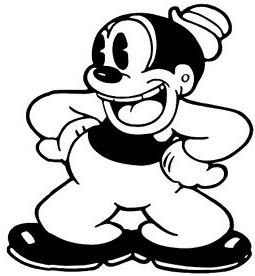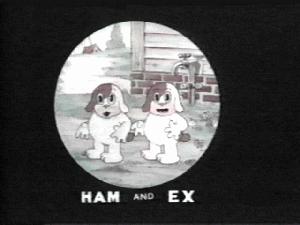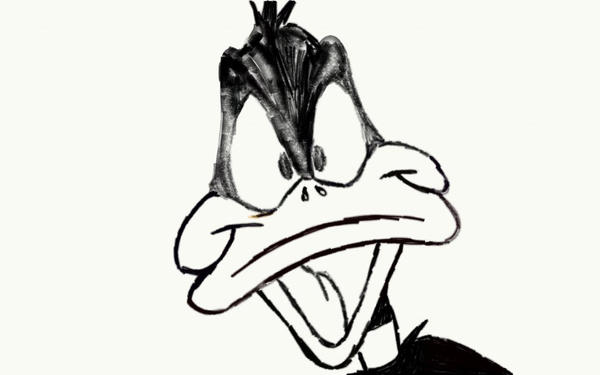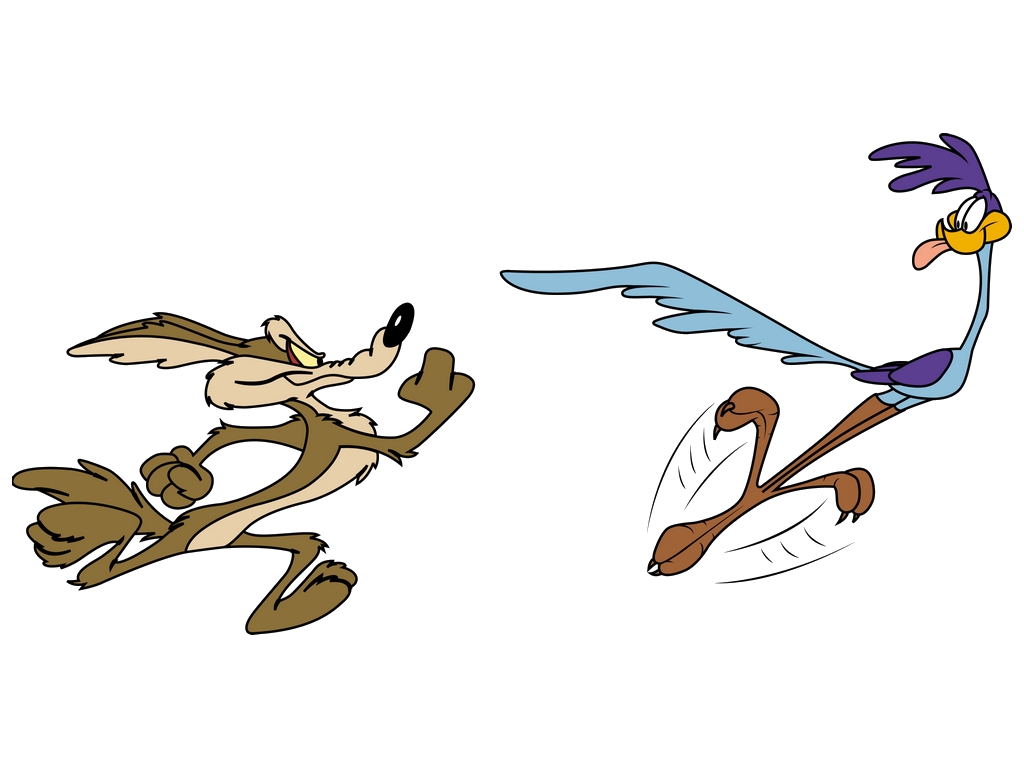Another character that came in around at the same time is Bosko (1929), this character started the real portion of the looney tunes. Honey was one a character that was related with Bosko his sort of 'girlfriend'.
One of the first Looney tunes character was called Buddy (1933). Was a kid human, was relatable for children. The only hard part for children to possibly to understand is the music, because back then everything was done in time to music, steps, running. No words all communication done by music.
Tex Avery, Frizz Freleng, Bob Clambet, thought they'd pick it up a notch and create more cartoon characters. They created Goopy Geer and played a role along with Bosko and Honey. Beans Cat was yet another character, another friend of Bosko and Honey. Around this time the Looney tunes characrers were starting to build up, all while still in Black and white.
Ham and Ex were two angry bulldogs, they showed different emotions of children to watch, wasn't very violent, back then violence was big on what kids were not aloud to watch. Not too violent but was enough to show kids not to be violent to others.
The Looney tunes became a lot more popular outside of cartoons, became mascots in Six Flags amusement parks. Children loved the fact that you could meet characters such as Bugs Bunny and Porky pig.
Porky Pig (1935) happened to be the very start of what Looney tunes is today. Along with Porky Pig, Petunia Pig was Porky's 'girlfriend' alike Bosko and Honey.
Alongside Porky, characters that also had a portion in the cartoons were Little Blabbermouse. Who was exactly that, a cute mouse who talked a lot. Another mouse children loved was Sniffles who sniffed a lot. Bookworm was another character who knew everything about books, he taught kids in cartoons educational things such has Letters and Numbers. A character that was also made around this time was Cecil turtle (featured only one in one cartoon, in Tortoise vs Hare)
Claude the Cat was the character showed the sad side of characters, he happened to be scared of mice, the dark, noises. Featured in cartoons with the other mice characters. Charlie the Dog was the opposite of Claude the cat, looked at things very positively.
Sam the Sheepdog (1953) chases away the (Ralph E. Wolf) Coyote away from the sheep in each episode. Rocky was another character added, Rocky showed how bad it is to show guns, smoke he was the violent side of he Looney tunes and showed how bad it is.
Bugs Bunny (1940 as Bugs Bunny, was in development from the 1930's as Happy Rabbit) came into play alongside the main character Porky the Pig, became a massive hit with the children. His first enemy in the Looney Tunes was the Crusher who used to wrestle Bugs.
In the picture above, the first 2 are Happy rabbit the 3rd one and on are Bugs Bunny.
Tasmanian Devil (1954) is another main character, he spun a lot and was rather slow in the head and because of that was tricked a lot.
Yosemite Sam ( April 3, 1943 ) (another of Bugs Bunny) was a true western cowboy all about guns and the only character he tried to shoot at was Bugs Bunny. Elmer Fudd (1940)/ Egghead (1937) is another character, a hunter who tries and get the rabbit (Bugs).
Daffy Duck (1938, was in development before hand.) is another main character, featured a lot with Bugs, hates bugs and always try and trick each other but Bugs always comes out on top of him.
The Road Runner runs along the roads, a type of bird. Wile E. Coyote, Road runner's nemesis.These two are always in the same cartoons together and are two main characters. Wile E. outsmarted a lot by Road Runner.
Pepe'le Pew (1945) was a french skunk who was all about love, the character is about irony because he's a skunk, he stinks so it plays on that a lot in the cartoons. He was in love with Penelope, a cat who used to always run into paint a lot so she looked like a skunk. Ensuing Pepe'le Pew to chase after Penelope.
Foghorn Leghorn (1946) was a father figure, family man who was always trying to correct people and show hthem how to do better. Roaster of the farm in looney tunes. His main chicken was Miss Prissy who laid a lot of eggs. Corrects Leghorn because she has aged. One egg she ended up having was Egghead Jr. who was built up into another character into Egghead who came about later in the Golden age of colour. He used to try and teach him the stuff he needed about life.
Granny was the loving caring old lady who had a pet cat, Sylvester. While raising Sylvester, granny gets Tweetie Pie, who he found out Granny had got. Granny always stops Sylvester from getting th bird while Tweetie always plays tricks on him. Sylvester has to grow up because he ends up having a child, Sylvester Jr. very timid and the opposite of his dad and loves Tweetie.






































